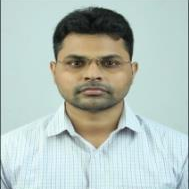
Sai Bharadwaj B
Work place: Department of Electronics & Communication Engineering, Vignan’s Institute of Engineering for Women, Visakhapatnam, Andhrapradesh, India, PIN 530049
E-mail: research4816@gmail.com
Website: https://orcid.org/0000-0002-2476-3825
Research Interests: Medical Informatics, Image and Sound Processing, Medical Image Computing, Speech Recognition, Speech Synthesis
Biography
Sai Bharadwaj B is currently pursuing his Ph.D. degree in department of Electrical, Electronics and Communication Engineering, GITAM Institute of Technology, GITAM Deemed to be University, Rishikonda, Visakhapatnam, Andhrapradesh, India. His research interests include bio medical signal processing, speech processing, machine learning.
Author Articles
Detecting the Third Heart Sound: Separation and Localization from Lung Sound using Intrinsic Time Scale Decomposition
By Sai Bharadwaj B Ch. Sumanth Kumar
DOI: https://doi.org/10.5815/ijigsp.2023.01.03, Pub. Date: 8 Feb. 2023
The extraction of heart sound component from a composite signal of heart and lung is a quite challenging task in phonocardiogram signal analysis the first heart sound (S1) and the second heart sound (S2), produced by the closing of the atrioventricular valves and the closing of the semilunar valves, respectively, are the fundamental sounds of the heart. To accomplish this task a novel framework with intrinsic time scale decomposition (ITD) is designed. The capture of the PCG signal frequently hides the detection of the third heart sound (S3), which is necessary to identify cardiac failures. To separate S3, ITD method is deployed to enable signal decomposition into certain levels. Next, by applying smoothed pseudo-Wigner Ville distribution (SWVD) with reassignment, the location of S3 is detected. The proposed method is performed on 36 combinations consists of 144 cardiac cycles containing S3 obtained from different online databases. In comparison to existing approaches, the proposed work separates the S3 from other heart and lung sounds and the proposed method obtained the detection accuracy of S3 as 95.4%, which proves the superiority with other methods.
[...] Read more.Other Articles
Subscribe to receive issue release notifications and newsletters from MECS Press journals